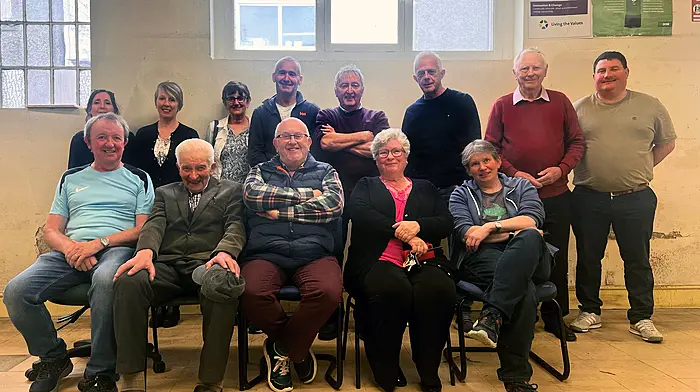The Health Protection Surveillance Centre has today (Thursday) been notified of 75 additional deaths related to COVID-19.
46 of these deaths occurred in February, 27 occurred in January, two were earlier.
The median age of those who died is 84 years and the age range is 34-100 years.
There has been a total of 3,586 COVID-19 related deaths in Ireland.
As of midnight, Wednesday, February 3rd, the HPSC has been notified of 1,318 confirmed cases of COVID-19. There is now a total of 200,744** confirmed cases of COVID-19 in Ireland.
Of the cases notified today:
- 622 are men / 688 are women
- 58% are under 45 years of age
- The median age is 40 years old
- 428 in Dublin, 122 in Cork, 93 in Galway, 78 in Kildare, 77 in Limerick and the remaining 520 cases are spread across all other counties.***
As of 2pm today, 1,284 COVID-19 patients are hospitalised, of which 188 are in ICU. 74 additional hospitalisations in the past 24 hours.
Dr Tony Holohan, Chief Medical Officer, Department of Health said: “We know that the over 70s have suffered the greatest burden of mortality and serious illness from COVID-19. Ireland is now in a good position; we can now offer highly effective and safe vaccines to this cohort.”
“The superior efficacy demonstrated by the mRNA vaccines authorised for use in Ireland, Pfizer BioNTech and Moderna mean that the mRNA vaccines are the right vaccine to provide the highest level of protection available to those over 70.”
“Over the coming weeks, we will see many more of our vulnerable loved ones receive their COVID-19 vaccinations. This is good news and gives all of us great hope. However, even if you have received your COVID-19 vaccine, you must continue to wash your hands, wear a face covering, maintain a social distance and keep your close contacts to a minimum. Until we have all been vaccinated, we must act as though none of us have been vaccinated.”
Dr Lucy Jessop, Director, National Immunisation Office: “The NIO works with colleagues across the HSE and in primary care to administer millions of vaccines every year. We are using our vast expertise and experience to deliver the COVID-19 Vaccination Programme safely and securely.”
“My colleagues and I in the National Immunisation Office are continuing to work hard to finalise our preparations, ensuring we are ready to administer safe and effective vaccines to the most vulnerable in our society as they are called for vaccination”.
Dr Ronan Glynn, Deputy Medical Officer, Department of Health, said: “Today we have reached another significant and unwelcome milestone as we report more than 200,000 confirmed cases. We must all redouble our efforts and drive down the incidence of disease in our community.”
“We are noticing a clear pattern in people with symptoms delaying contacting their GP to arrange a test. It is vital that as soon as you notice that you have symptoms of COVID-19 that you isolate and contact your GP immediately. By acting quickly, we can prevent the spread of COVID-19 and protect our vulnerable loved ones.”
Professor Philip Nolan, Chair of the NPHET Irish Epidemiological Modelling Advisory Group, said: “The next few weeks will be difficult for all of us, as we bring the daily case levels below 1,000 per day, our progress will seem to slow down. It is now more important than ever that we continue our efforts to bring case numbers down towards the very low levels we achieved in June and July. In that regard, it is very good news that our estimates of the R number are well below one – in the region of 0.5 – 0.8.”
“I noted last week that the testing of close contacts will impact on case numbers in the coming days. We shouldn’t be disappointed by this, it shows that we have moved from the mitigation phase of the last few weeks, back to the containment phase where we are tracking down every possible chain of transmission.”
The COVID-19 Dashboard provides up-to-date information on the key indicators of COVID-19 in the community.
***
Today’s cases, 5-day moving average of new cases, 14-day incidence rate per 100,000 population and new cases in last 14 days (as of midnight 03 February 2021) (incidence rate based on Census 2016 county population)
| County | Today's cases (to midnight 03Feb2021) | 5 day moving average (to midnight 03Feb2021) | 14-day incidence rate per 100,000 population (21Jan2021 to 03Feb2021) | New Cases during last 14 days (21Jan2021 to 03Feb2021) | |||||
| Ireland | 1,318 | 1,102 | 397.1 | 18,909 | |||||
| Monaghan | 27 | 27 | 876.4 | 538 | |||||
| Waterford | 40 | 40 | 612.9 | 712 | |||||
| Louth | 38 | 38 | 609.9 | 786 | |||||
| Carlow | 46 | 20 | 586.7 | 334 | |||||
| Wexford | 28 | 54 | 525.0 | 786 | |||||
| Dublin | 428 | 383 | 480.6 | 6,475 | |||||
| Mayo | 27 | 30 | 442.1 | 577 | |||||
| Offaly | 21 | 17 | 424.6 | 331 | |||||
| Meath | 68 | 42 | 411.2 | 802 | |||||
| Galway | 93 | 70 | 374.7 | 967 | |||||
| Limerick | 77 | 47 | 374.6 | 730 | |||||
| Longford | 8 | 5 | 345.0 | 141 | |||||
| Kildare | 78 | 53 | 342.9 | 763 | |||||
| Donegal | 36 | 27 | 338.0 | 538 | |||||
| Cork | 122 | 97 | 323.7 | 1,757 | |||||
| Cavan | 23 | 14 | 320.3 | 244 | |||||
| Sligo | 13 | 12 | 311.3 | 204 | |||||
| Tipperary | 22 | 24 | 301.5 | 481 | |||||
| Laois | 19 | 18 | 277.5 | 235 | |||||
| Wicklow | 27 | 25 | 275.2 | 392 | |||||
| Westmeath | 16 | 13 | 268.1 | 238 | |||||
| Clare | 14 | 12 | 216.3 | 257 | |||||
| Leitrim | 8 | 5 | 209.1 | 67 | |||||
| Kilkenny | 16 | 10 | 195.5 | 194 | |||||
| Kerry | 20 | 14 | 183.5 | 271 | |||||
| Roscommon | <5 | 5 | 137.9 | 89 |
~The 5-day moving average of the number of new cases provides an appropriate indicator of current daily case numbers within a county. It takes account of any validation of cases for previous days and smooths out daily/weekend fluctuations in case numbers.
- Seven-day incidence is 171.6
- Five-day moving average is 1,102
- You can subscribe to the Southern Star Coronavirus podcast which is available, in audio and video versions, on YouTube, Spotify, iTunes, or wherever you get your podcasts.








